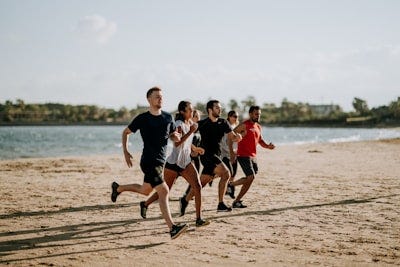Fat Burn
According to rats, vigorous exercise burns more fat in males than females, cardio reduces death from all causes and your weekly recommendations.
The Rundown
Fat Burn. On May 1, the group behind the Molecular Transducers of Physical Activity Consortium (MoTrPAC), a collaboration that involves over 100 scientists working across more than 24 sites around the United States, published their core paper in the journal Nature. Using rats, which share a lot of their basic physiology with people, the years-long research investigated the molecular actions that translate vigorous exercise into health benefits.
The team found that exercise affects more than 35,000 molecules and none of the 18 tissue types they studied went unchanged. They discovered molecular signals in both males and females that showed extensive benefits of exercise including enhanced liver function, stronger heart muscle, enriched immunity and reduced inflammation in the lungs and gut.
The most surprising difference however, was in the fat tissue, which is the subject of the Nature paper. Describing his reaction as “gobsmacked,” one of the study’s corresponding authors says that when it came to burning fat, the sex-dependent responses to exercise were “amazingly different.”
Specifically, males burned fat for energy while females preserved their fat mass.
These results are based on an analysis of tissues and blood samples from rats that ran on treadmills in a laboratory at the University of Iowa. The team took thousands of measurements of proteins, molecular measurements called transcripts and chemical compounds called metabolites.
Among the treadmill rats, males burned fat and kept it off. Females initially burned fat, but at the end of eight weeks, their fat stores were back to where they were when they began.
Both male and female rats kicked their metabolism into gear to get the energy they needed but they did so in different ways. The females got their energy without drawing much from their fat stores, an outcome that is likely due to those stores being critical to reproductive health.
The team notes that their findings can’t be automatically applied to obese animals or to other types of exercise, like strength training, but they believe that the results offer a roadmap from rats to people because they “help set the landscape to understand disease risk and establish a basis for more personalized and targeted health interventions.”
Cardio for Life. New research from the University of South Australia has found that an increased cardio fitness level will reduce your risk of death from any cause by 11-17% and your risk of heart disease by 18%.
The study, which included 26 systematic reviews with meta-analysis representing over 20 million observations from 199 unique cohort studies, is the first to collate all the evidence that looks at the prospective link between cardiorespiratory fitness and health outcomes among adults.
The team found that every 1-MET increase in cardiorespiratory fitness (CRF), which is the amount of energy used when sitting quietly, reduced the risk of early death.
The study’s senior author, Grant Tomkinson, sums up the results, “For most people, a 1-MET increase in CRF can be achieved through a regular aerobic exercise program. The message is quite simple: if you do a lot of “huff and puff” exercise, then your risk of dying early or developing diseases in the future is reduced.”
Extra Point
Watch
26.2 to Life. On a sunny November morning, members of the 1000 Mile Club take their places at the starting line of the San Quentin Prison Marathon, 105 laps around a crowded prison yard. This documentary tells their story but it’s as much about inmates seeking redemption as it is about the runners/trainers who empower incarcerated people and inspire broader reforms in the prison system. 26.2 to Life is streaming on Hulu.
Listen
The Nocturnists. Hosted by Dr. Emily Silverman, this award-winning medical storytelling podcast features conversations with authors, filmmakers and others whose work looks at health and healing.
Read
I Ran an Entire Marathon With a Garmin, an Apple Watch and Strava--Here Are All the Differences. TechRadar’s Fitness and Wearables Editor, Matt Evans, talks about what he learned from three different data sets while running the London Marathon.



